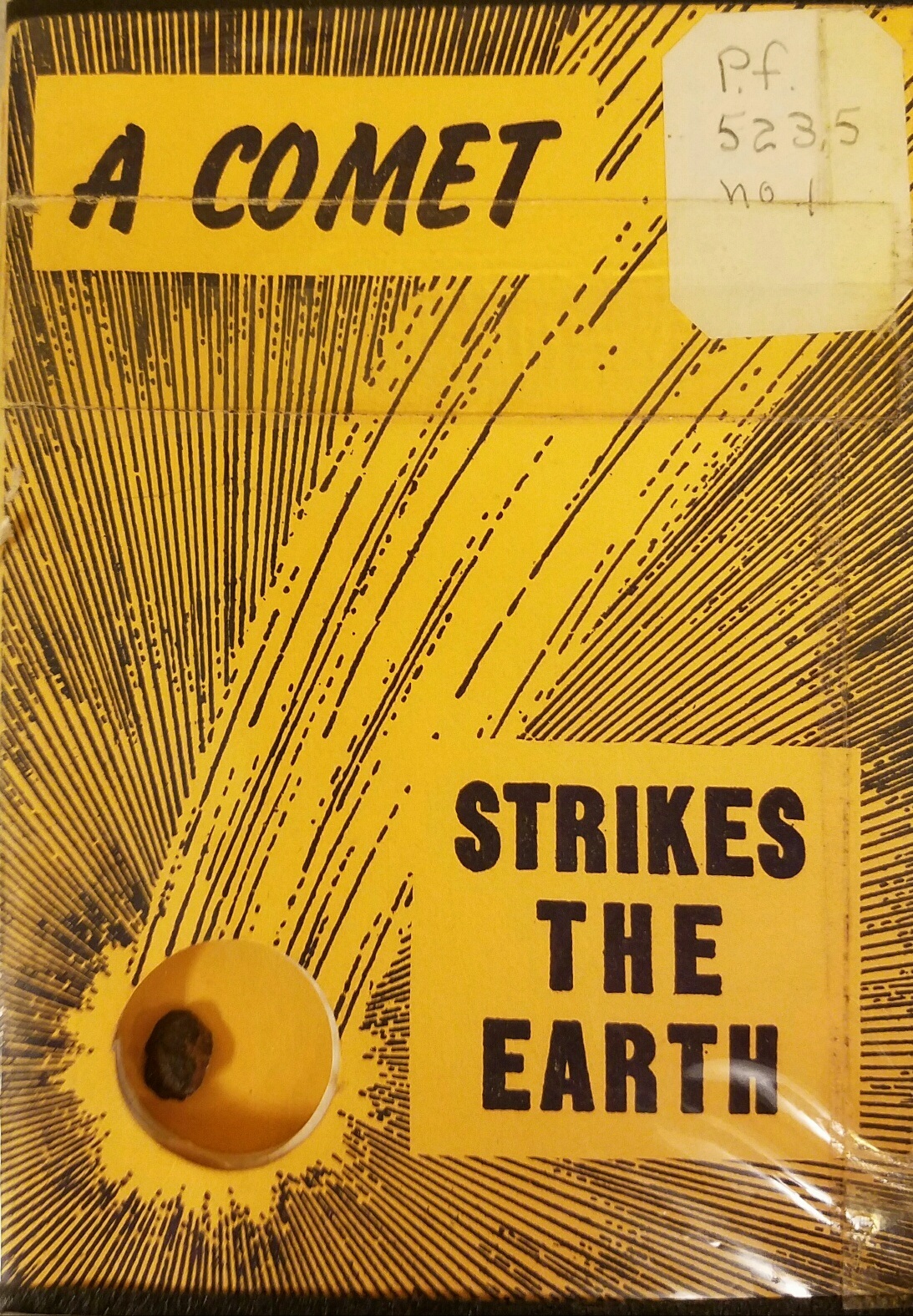Everyone has at least a vague idea what meteors and meteorites are, but to get a more definitive description one of the places you can go to is the NASA (National Aeronautics and Space Administration) solar system website where it give the following description of meteors and meteorites.
“Little chunks of rock and debris in space are called meteoroids. They become meteors – or shooting stars – when they fall through a planet’s atmosphere; leaving a bright trail as they are heated to incandescence by the friction of the atmosphere. Pieces that survive the journey and hit the ground are called meteorites.”
These chunks of space debris can be really small or weigh thousands of pounds and people go out to watch the sky in awe and wonder. We see it as an amazing natural event, but how did our ancestors view this event? Well, according to a number of materials here at the Indiana State Library our ancestors often viewed meteors and especially meteorites as sacred objects that were either used in a religious manner or treated as taboo. One such instance that was mentioned in the book Our stone-pelted planet: a book about meteors and meteorites / by H.H. Nininger. (ISLM 523.5 N715o) tells of a large meteoric iron weighing 3407 pounds that was found wrapped in mummy cloth in the manner of an honorable burial in Chihuahua, Mexico. More stories along this line can be found in the materials in the collections in the Indiana State Library because not only we are the Regional Federal Government Document Depository Library and therefore the home of copies of all the materials that the Government Printing Office publishes for NASA, but we are also the home of an actual meteorite.
Yes, that’s right we have a meteorite. It isn’t nearly as big as the one in Mexico, but it is a part of the Reference & Government Documents Collection here at the Indiana State Library bound in the book A Comet Strikes the Earth/ by H.H. Nininger. (ISLM P.F. 523.5 no 1). Come and see the real thing for yourself.

